While it may take a bit of planning and patience, this 72-hour pizza dough could not be any simpler. The slow, cold fermentation process gives this pizza dough a light, airy texture and delicious, yeasty flavor.
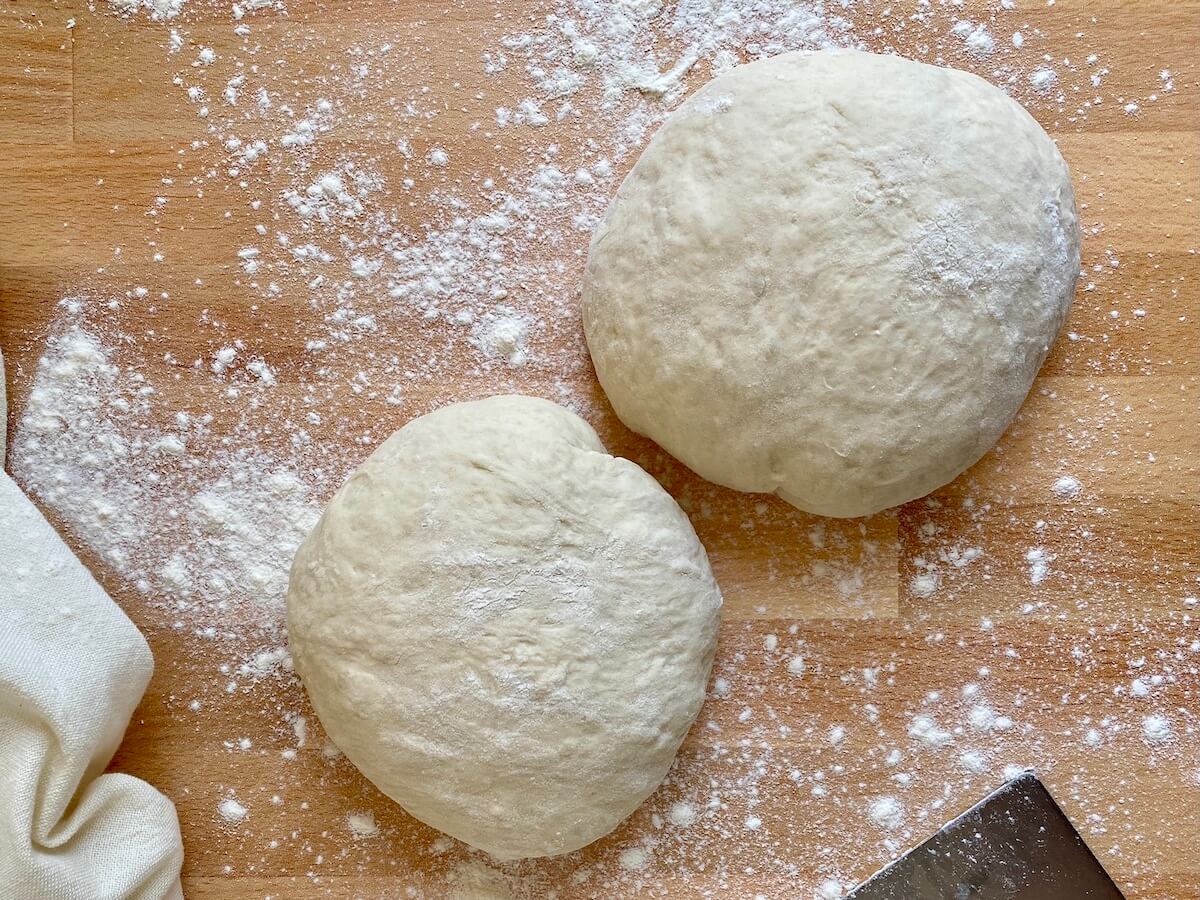
If you're like me and love making homemade pizza, but always default to store-bought pizza dough, I'm here to change your mind. Many people feel intimidated by working with yeast breads or believe that they take too much time and effort to make.
And while that can be true for some types of yeast bread, this no-knead, 72-hour pizza dough could not be any easier. All you need is a little patience and some planning skills.
My absolute favorite pizza dough recipe is Jim Lahey's No-Knead Pizza Dough. It's so simple and comes out perfect every time.
You can use the dough immediately after it rises for 24 hours at room temperature, but I like to let it slowly ferment in the refrigerator for a few more days. Why? Because the fermentation process creates the most deliciously crispy and flavorful pizza crust ever.
So, if you're ready to jump in and try making your own pizza dough from scratch, keep reading to learn this foolproof method.
>> Need ideas for pizza night? Try this Garlic Parmesan Pizza recipe or this Bolognese Pizza recipe.
Disclaimer: Some links throughout this post are affiliate links. As an Amazon Associate, I earn from qualifying purchases. You can learn more by visiting my Affiliate Disclosure Page.
Why This Recipe Works
- Easy- If you're intimidated by the thought of making your own pizza dough, I promise you this recipe is SO simple. With only four ingredients and most of the "work" being completely hands-off, you'll have this pizza dough recipe mastered in no time at all.
- Slow Fermentation- The reason why this recipe is called "72-Hour Pizza Dough" is because it literally takes 72 hours for the dough to develop its perfect flavor and texture. As the dough rests in the refrigerator, the yeast slowly breakdown the sugars in the flour and produce CO2 and alcohol as byproducts. The CO2 gives the crust a light, airy texture while the alcohol contributes to the flavor.
- Versatile- Just like any other pizza dough, you can use this recipe for many other things besides pizza. Calzones, flatbreads, garlic knots, pizza pinwheels, and cinnamon rolls are just a few recipes I can think of off the top of my head. You can also freeze individual dough balls so that you'll always have homemade pizza dough on hand.
Ingredient Notes
Here are some notes on key ingredients. For a full list of ingredients, check out the recipe card below.
- Flour- I use all-purpose flour in this recipe, but you can also use bread flour. I highly recommend using a scale to measure the flour (and all of the ingredients, honestly) so that your pizza dough comes out just right.
- Water- It's a good idea to use room temperature or slightly warm water to help the dry yeast "activate" and begin multiplying in your dough. Generally, 105-110°F is the recommended temperature, but just "warm to the touch" is fine, too.
- Yeast- The life force behind this 72-hour pizza dough is the yeast. Without it, this dough would fall flat - literally. The yeast are responsible for both the flavor and the texture of this pizza dough.
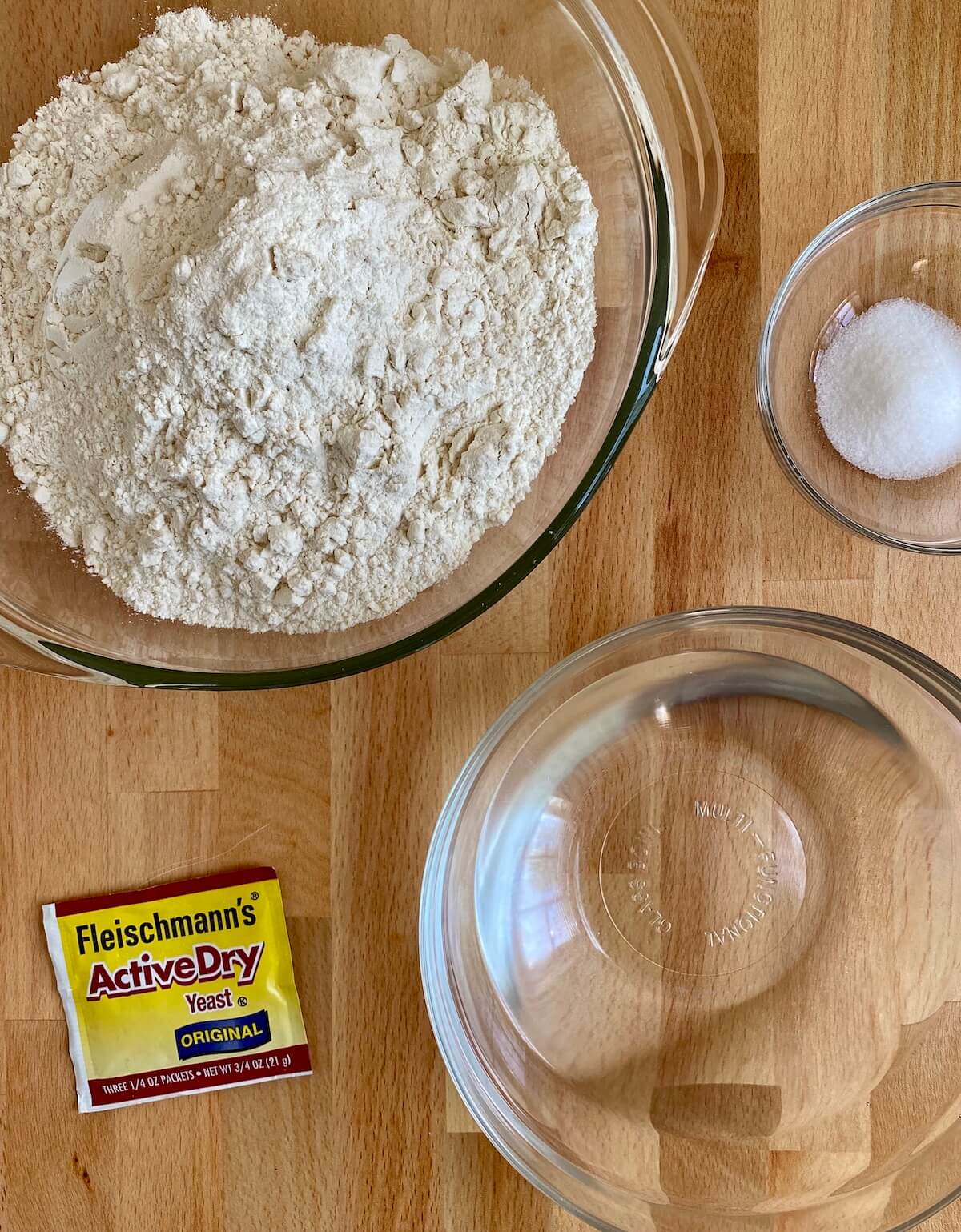
How to Make 72-Hour Pizza Dough
Here is how you make this 72-hour pizza dough.
Step 1: Make the dough. In a large mixing bowl, whisk together the flour, yeast, and salt. Add the water and, using your hands or a wooden spoon, mix together until all of the flour is mixed in and a shaggy dough ball is formed.
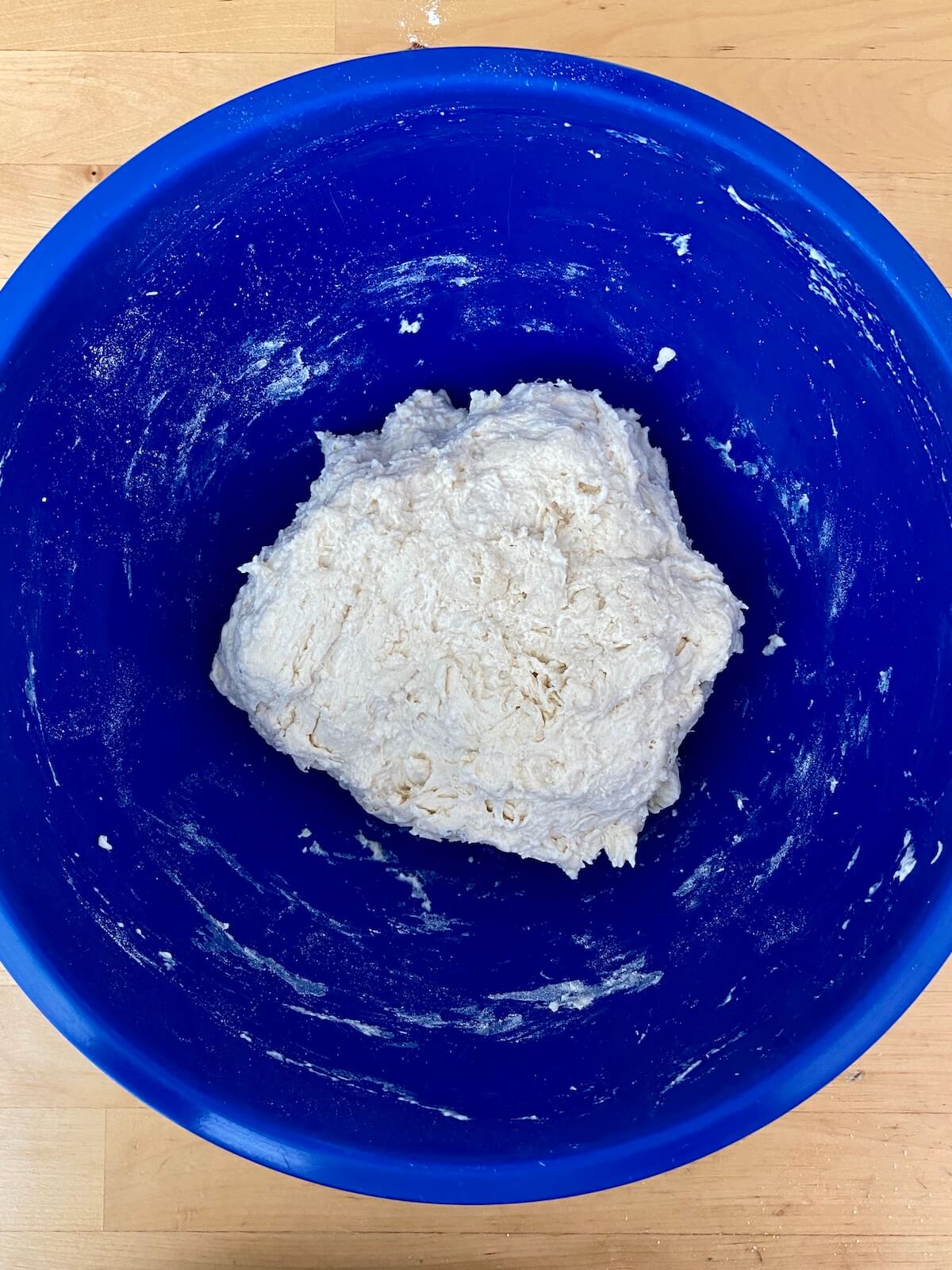
Step 2: Bulk ferment for 24-hours. Cover the bowl with a damp, clean kitchen towel or plastic wrap. Allow the dough to rise at room temperature for 24 hours. It should be more than doubled in size and look nice and bubbly on the surface.
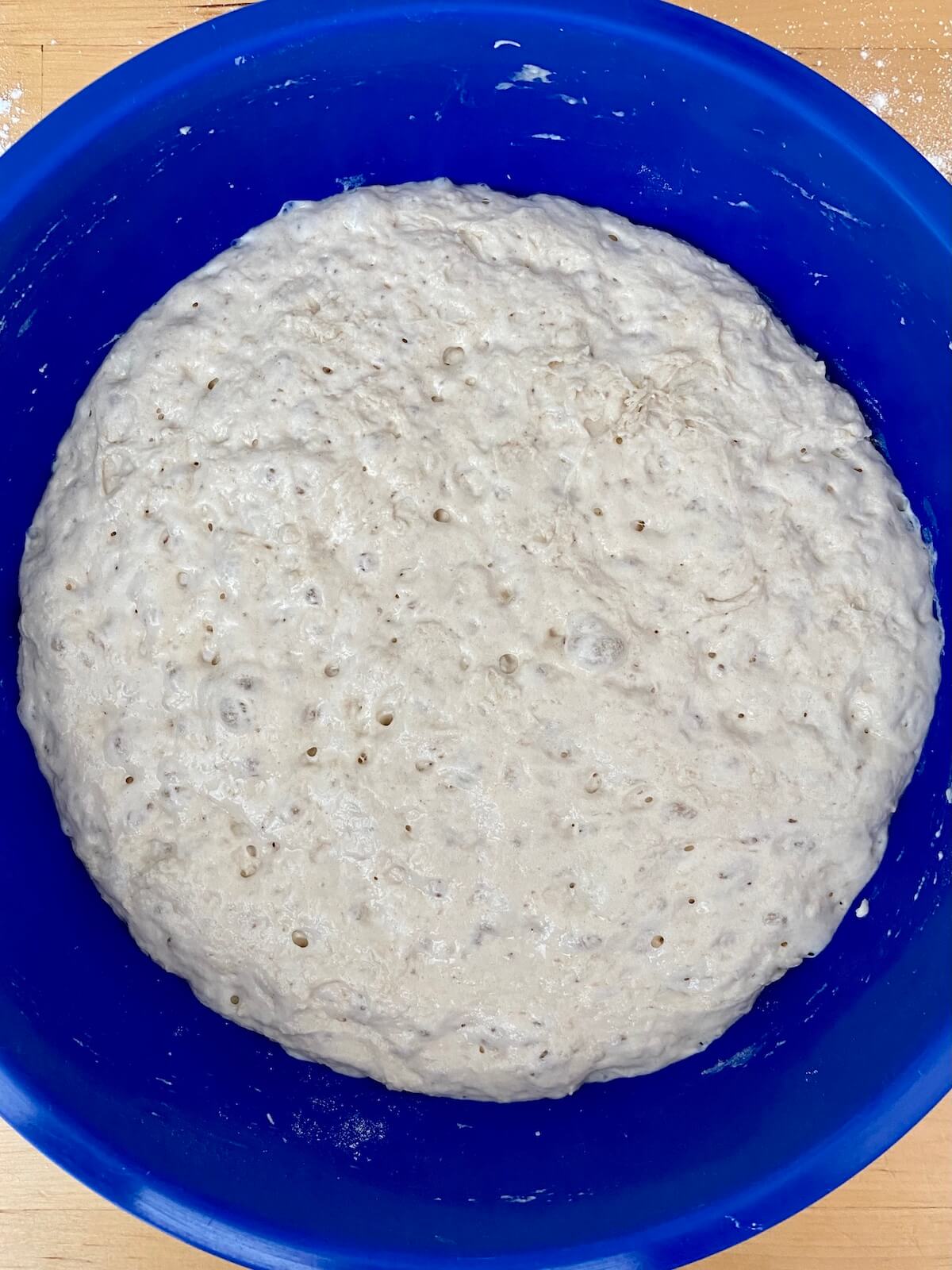
Step 3: Divide and shape. After 24 hours, flour a work surface and turn out the dough. Divide the dough into 2 equal parts. For each portion, take one edge of the dough and pull it out and over towards the center; repeat this with all 4 edges for both pieces of dough. Flip the dough seam side down and shape into rounded dough balls. At this point, the dough balls should be easy to handle. If not, dust with a bit more flour.
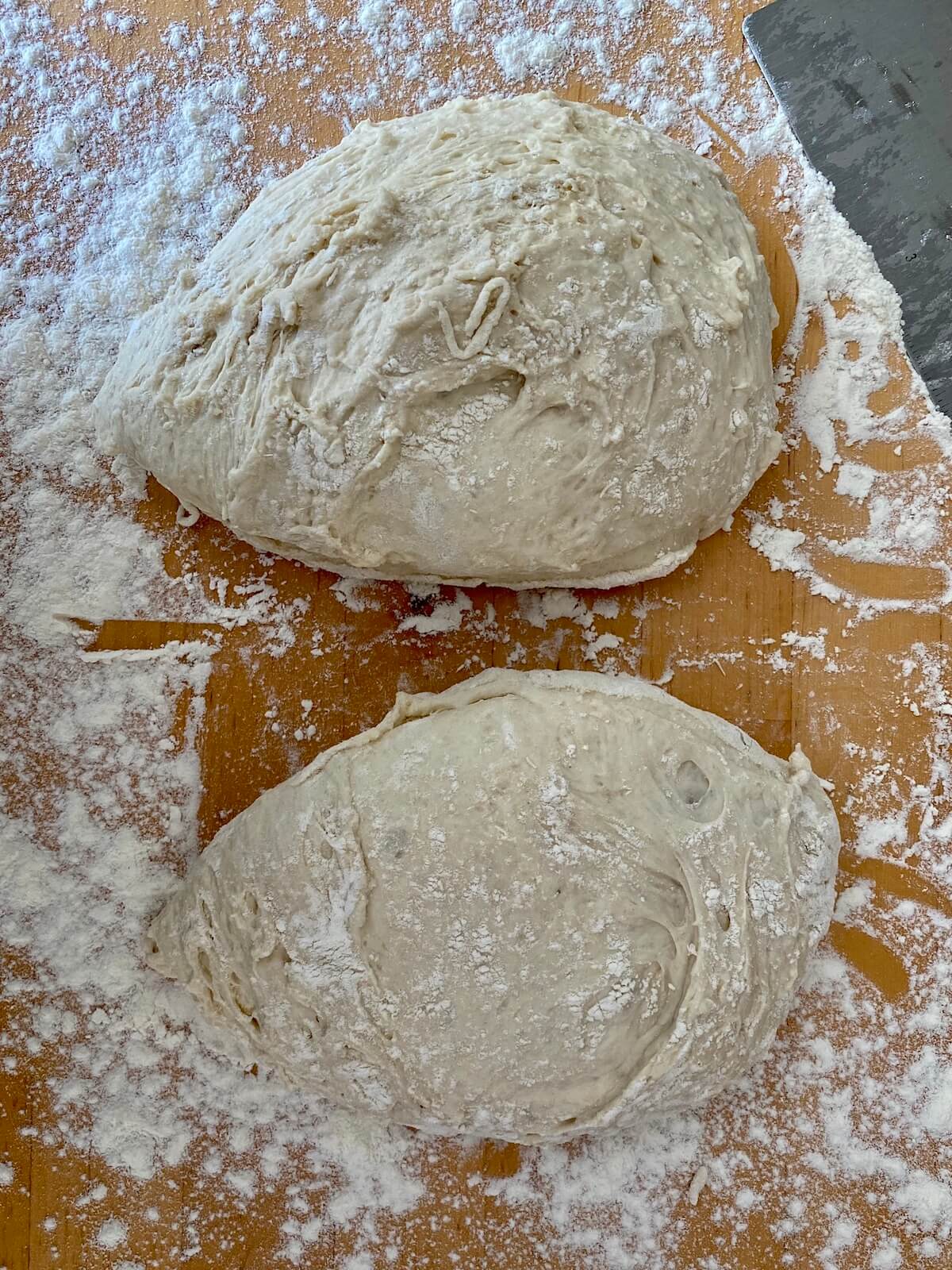

Step 4: Refrigerate for 48 hours. Wrap each dough ball in plastic wrap and refrigerate for 48 hours. During this time, the yeast will continue to slowly ferment the dough, creating a delicious flavor. Remove the dough from the refrigerator about 30-60 minutes prior to using to allow it to come to room temperature (leave the plastic wrap on). This will make stretching the dough easier.

Tips and Tricks
- Measure ingredients by weight- If you have a food scale, definitely use it for this recipe. If you don't, I highly recommend getting one. It's very easy to over or under-measure flour when measuring by volume (i.e. cups). Measuring by weight ensures you get the same result every time you make this pizza dough.
- Handle the dough gently- Jim Lahey himself recommends treating the dough with care. You want some pockets of air to remain in the dough, even after you stretch it to make pizza. These bubbles in the dough will blister nicely in the oven, creating an even more delicious crust.
Serving Suggestions
Here are a few of my favorite ways to use this 72-hour pizza dough.
- Margherita Pizza- A simple and classic pizza that will please just about anyone. Perfect to use up those ripe summer tomatoes and fresh basil.
- Bolognese Pizza- A rich and filling pizza, this recipe makes use of leftover bolognese sauce.
- Kale & Goat Cheese Flatbread- A deliciously savory fall flavor combination. Mushrooms, butternut squash, and caramelized onions also work well on this flatbread.
- Eggplant Parmesan Calzone- One of my favorite calzone recipes. It makes for a wonderful vegetarian appetizer or dinner.
- Buffalo Chicken Pizza or Calzone- A pizza shop staple, you can make it even better with your own homemade pizza dough.
- Meatball Pizza- My Dutch Oven Meatballs are the perfect topping for a hearty meatball pizza.
- Mushroom Pizza- Perfect for vegetarians, mushroom pizza is meaty, hearty, and satisfying.
Storage
While this recipe is called 72-hour pizza dough, you can actually store this dough in the refrigerator for up to 10 days. However, after 6 days the quality begins to suffer, gradually getting worse each day. The sweet spot for optimal quality, flavor, and texture is between 3-5 days in the refrigerator.
How to Freeze
Complete all recipe steps, including the cold fermentation in the refrigerator for at least 48 hours. Then, place the individually wrapped dough balls in a freezer storage bag. The dough will stay good in the freezer for up to 3 months.

Frequently Asked Questions
Achieving a well-cooked pizza at home can be tricky business. I've found that pizza cooked on a pizza stone in a 550°F oven for approximately 8-12 minutes is as close to restaurant quality as it gets. It's important to give both the oven and the pizza stone at least an hour to preheat.
You can also make pizza on a sheet pan, on the grill, or in a cast-iron skillet.
No, you don't. If you're short on time, you can use this pizza dough immediately following the 24-hour bulk ferment step (step 2). However, the dough will not have as complex a flavor or as airy of a texture.
Likewise, if you've left your pizza dough in the refrigerator past the 72-hour mark, that's okay too! You can store this dough in the refrigerator for up to 10 days. Keep in mind that quality starts to degrade beyond day 6.
If all you have on hand is instant yeast, you can still use it in this recipe. The general rule of thumb is to use 25% less instant yeast in place of active dry yeast. So, for this recipe, you would want to use about 0.75 grams (or 3/16 teaspoon).
Yes! In fact, I have an easy recipe for sourdough discard pizza dough that you can try if you're looking to use up some sourdough discard.
If you're looking for a gluten-free pizza dough recipe, I recommend finding one that is already written to be gluten-free. I have not tested this recipe with gluten-free flour.
📖 Recipe
72-Hour Pizza Dough
Equipment
Ingredients
- 500 grams (3 ¾ cups) all-purpose flour
- 1 gram (¼ teaspoon) dry active yeast
- 16 grams (2 teaspoons) salt
- 350 grams (1 ½ cups) water room temperature
Instructions
- In a large mixing bowl, whisk together the flour, yeast, and salt. Add the water and, using your hands or a wooden spoon, mix together until all of the flour is mixed in and a shaggy dough ball is formed.500 grams (3 ¾ cups) all-purpose flour, 1 gram (¼ teaspoon) dry active yeast, 16 grams (2 teaspoons) salt, 350 grams (1 ½ cups) water
- Cover the bowl with a damp, clean kitchen towel or plastic wrap. Allow the dough to rise at room temperature for 24 hours. It should more than double and look nice and bubbly on the surface.
- After 24 hours, flour a work surface and turn out the dough. Divide the dough into 2 equal parts. For each portion, take one edge of the dough and pull it out and over towards the center; repeat this with all 4 edges for both pieces of dough. Flip the dough seam side down and shape into rounded dough balls. At this point, the dough balls should be easy to handle. If not, dust with a bit more flour.
- Wrap each dough ball in plastic wrap and refrigerate for 48 hours. During this time, the yeast will continue to slowly ferment the dough, creating a delicious flavor. Remove the dough from the refrigerator about 30-60 minutes prior to using to allow it to come to room temperature (leave the plastic wrap on). This will make stretching the dough easier.
Nutrition

Did you try this recipe?
Let me know! Comment below, or take a picture and tag me on Instagram @enwnutrition.




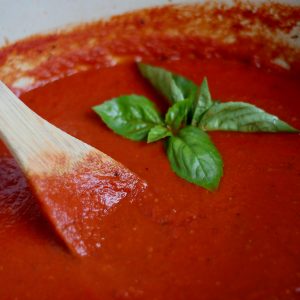

Comments
No Comments